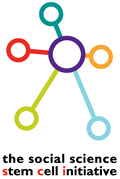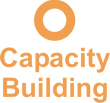BULLETIN FOUR - SUMMER 2008
This fourth Bulletin has been prepared from Sydney, where the SCI Director, Andrew Webster, is currently based on a two month International Research Fellowship funded by the University of Sydney. Based in the Department of Sociology and Anthropology, he is working with Professor Cathy Waldby on different aspects of what she has termed the ‘tissue economy’. He is also taking the opportunity to disseminate SCI work through one of Sydney ’s ‘Public Lectures’, details of which can be found here - html.
Australian stem cell science is focused mainly on some key centres including Melbourne, Monash and Brisbane, and emergent networks such as the New South Wales SCN, holding its 11 th Workshop shortly (see details here - pdf). Recent legislative changes at both Federal and State level have opened up new opportunities for stem cell research in Australia, notably through the approval of somatic cell nuclear transfer (SCNT). There has also been a push, as we have seen globally, towards induced pluripotent stem cells through reprogramming adult cells to exhibit traits similar to embryonic stem cells. While there is a much larger and rapidly growing investment in more conventional biotech fields (such as human therapeutics which constitutes almost 50% of overall biotech investment) substantial funding (c. $115m) as gone, since 2002, to the Australian Stem Cell Centre (ASCC), a Biotechnology Centre of Excellence based in Monash and Brisbane. The ASCC’s main research strength thus far lies in its work on haematology , which, as the SCI project led by Paul Martin shows, is one of the longest-standing areas of work involving tissue culture techniques using haematopoetic stem cells. The Centre has recently (May 2008) submitted its reply to the Australian government’s current consultation on its Innovation Review. Many of comments endorse Martin et al.’s argument that the public sector will be key to any ‘translational medicine’. However, there is little reference made to understanding and developing therapies through close collaboration with clinicians and thereby understanding what clinical utility means in practice, other than through the conventional clinical trials. While safety is key – and indeed there are some specific safety issues associated with stem cell implants, perceived utility is equally important.
In this regard, it is worth noting the recommendation made by another organization, the Bio21-Cluster, to the Review: ‘Being able to take laboratory-based findings into a clinical setting or being able to discuss with research scientists clinical needs seeking innovative solutions requires clinically trained professionals who also have a strong research background. Clinician researchers are becoming a rare breed. A combination of, lack of quality research time, mentor networks and funding support have seen a drop in the number of clinician researchers in recent years. A National Clinician Researcher Fellowship Scheme could support them.’
It goes on to suggest that the scheme could form part of a parallel Centre(s) for evidence-based research and translation into clinical practice, which would seek to bring together basic and translational research in clinical research centres based within hospitals: ‘The spectrum of activities would cover basic research → animal research → clinical trials/clinically testable findings leading to clinical innovation and altered health practice.’ Again, as in earlier SCI Bulletins, the long-standing problem of translational research rears its head, as it has done in the UK via the Pattison Review of stem cell science and the broader Cooksey Report (2007).
What of course is being ‘translated’ is a key issue, and in the UK we have seen very recently the debate in the House of Commons and Lords about animal/human cybrids (or ‘admixed embryos’) as part of the revisions to the Human Fertilisation and Embryology Bill, which will amend the HFE Act 1990. There has now been a delay on further debate on the Bill until October, less to do with admixed embryos and more about amendments relating to abortion and contraception (such as the ‘morning-after pill’). Assuming these amendments are agreed in October, the Bill will be implemented during 2009. One of its key elements is the creation of cybrids as a source of stem cells for experimentation, and the possibility of the creation of transgenic and chimeric human embryos for research.
In Australia , Federal policy prohibits the creation of animal/human cybrids, though it is clear that, as with SCNT, pressure on regulators to move towards accepting this is inevitable. Work by SCI-researcher Olivia Harvey, based at UNSW Sydney, has examined the changing policy context within Australia (see her paper, ‘Regulating stem-cell research and human cloning in an Australian context: the Lockhart Review, Global Biopolitics Research Group Working Paper here - html )
Harvey shows that since 2002 the political engagement with stem cell science has changed progressively and argues that the steady ‘normalisation’ of something once regarded as ‘Frankensteinian science such that…the embryo is increasingly being seen as a therapeutic entity, no longer explicitly associated with an intrinsically inviolable human identity. Given this, a more permissive regime around stem cell research and human cloning in Australia will result’. If this does happen, it is likely that pressure for change will come from the regional state governments, notably Victoria and Queensland , who have considerable economic and institutional investment in the field.
Given that in the UK, stem cells scientists are looking to cows as a source of eggs for cybrid work, it is somewhat ironic that the one scientist who has had considerable experience researching cattle reproduction (at the then Agricultural Research Council, Cambridge, UK) , Alan Trounson, has now left Monash to head-up the California Institute for Regenerative Medicine.
1. The social science exploration of stem cells focuses on the interaction between the social and the biomedical and asks if new social relationships are generated as a result and if so, whether these in some way change the way we think about our bodies, cultural identities, and existing ways of managing science. As a recent paper by Pfeffer (Social Science and Medicine, 66: :2544-2554, 2008) shows when women donate aborted fetal tissue to be used for stem cell science, for example, as a 'good thing', our evidence shows that when they received more information and thought more carefully about the implications of such a decision their views became much more ambivalent. What makes stem cell research here more troubling is its association with renewal, regeneration, and immortality which participants understood as somehow reinstating and even developing the fetus' physical existence beyond abortion, the very thing abortion is meant to eliminate. This simple example shows how the new research challenges conventional assumptions about our bodies, our tissues, indeed the very meaning of ‘life’ itself.
2. These meanings are also highly culturally and politically specific, not least, as Latour might argue, ordering those things that are seen as disorderly – here in biosocial terms – is a highly political activity. Very recent work within the SCI by Margaret Sleeboom-Faulkner reports on her extended fieldwork in South Korea and Japan (in the latter for example, she interviewed over thirty scientists working with embryos and stem cells during fieldwork visits in eleven science institutions) . Her papers on this will be published shortly and more details will be given then. One interesting point she makes about Japan is that stem cell scientists express concern about ‘unclear’ yet ‘strict’ guidelines governing research, and are seeking clarification over bioethical regulation. There are some interesting aspects to the Japanese case compared with the UK : both have relatively permissive legal regimes with respect to what can be done with embryonic tissue, yet both have – and Japan more so than the UK – strong regulatory and governance regimes overseeing practice on the ground. The relationship between law, ‘soft law’, and formal regulation produces different forms of ordering of disorderly things.
3. Sarah Parry and her team in Edinburgh are moving towards the final stages of their ongoing programme of meetings that bring a wide range of people together, including scientists, nurses, various patient groups and community groups. The April meeting which asked people to consider the future of stem cells research is reported here - html. One of the most recent meetings focused on the commercialization of stem cell research and examined three issues with the help of a number of invited speakers:
- Applications for drug discovery and development: Marilyn Robertson
- Infrastructure and inputs needed for stem cell R&D: Cathy Rooney
- Cell therapy applications (bone and tissue repair): Brendon Noble.
A full report on this workshop and the final one in November will appear in the Christmas SCI e-Bulletin.
4. Look out for the publication of a new book in the Palgrave Health, Technology and Society Series, authored by co-researchers within the SCI-network: Gottweiss, H., Salter, B. and Waldby, C. (2008) The Global Politics of Human Embryonic Stem Cell Research, Palgrave (in press).
5. See also the papers in ‘Stem Cell Spaces, Places and Flows ‘, Special Issue of New Genetics and Society, 2008; no 2: vol 27, edited Lena Eriksson, Neil Stephens and Andrew Webster, which is devoted to SCI research, carrying seven papers from the initiative. See here - html
New grants
Two new grants related to SCI researchers have recently been awarded:
Nik Brown, based at SATSU in York, has received funding from the ESRC to examine developments in cord blood banking;
Clare Williams and a range of co-investigators at CBAS (KCL) and elsewhere have been awarded a strategic award from the Wellcome Trust to build on their completed SCI work.
Various workshops and related activities have been held: please contact the organiser(s) for results/reports of these meetings.
i) May 20008: International Workshop on ‘Emerging Science Powers and the Global Politics of Regenerative Medicine’, King’s College London, organised by Brian Salter and Amanda Dickins.
ii) June/July 2008 Cellular Spaces: A CBAR-Workshop on Cells’, organised by Christine Hauskeller , Egenis, University of Exeter.
iii) June 2008: Bioethics, Policy and Politics: The Emerging Global Agenda, Report on the proceedings of a GBRG / CBAS workshop on "Bioethics and the reconciliation of cultural difference" held at King's College, London, organised by Brian Salter and Amanda Dickins
iv) the latest UKNSCN newsletter carries a piece by SCI member Brian Salter who is a member of the Network’s Steering Committee see here - pdf
v) July 10: 'The Future of Biological Control' organised by Sarah Franklin of the BIOS Centre at the London School of Economics and the Wellcome Trust to commemorate Anne McLaren's contribution to law, ethics and policy in the field of embryology and assisted conception. Further details here - pdf
Catherine Waldby 2008 ESRC Stem Cell Initiative International Visiting Research Fellowship - Centre for Biomedicine & Society , King's College, London - £2750
2008 Andrew Webster and Catherine Waldby (Host collaborator), International Visiting Research Fellowship, Sydney University - The social studie of Regenerative Medicine: building research capacity and collaboration, $11,500.
Professor Andrew Webster
Co-ordinator, ESRC Stem Cell Initiative





